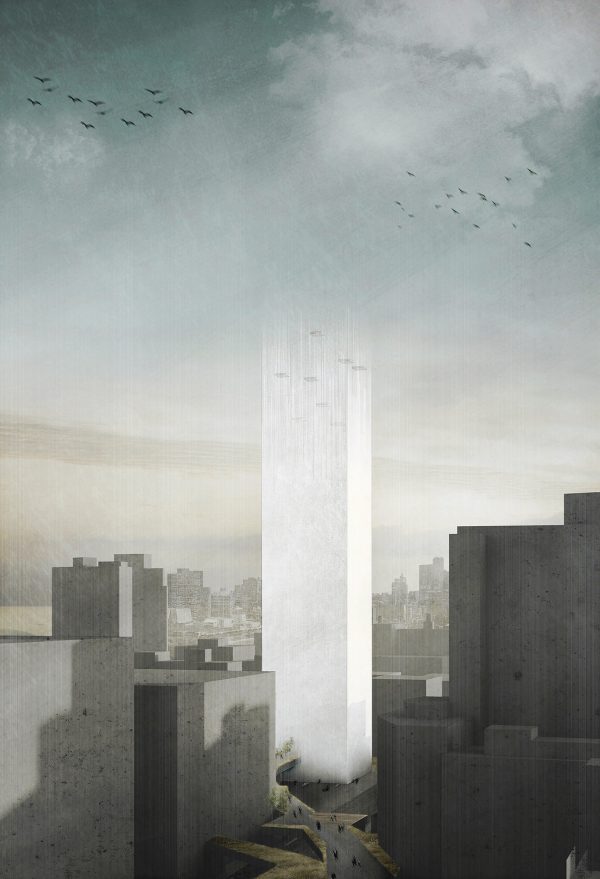Honorable Mention
2017 Skyscraper Competition
Rebecca Nathalie Wennerstrand, Mayank Thammalla, Robert Haejun Park
New Zealand
Currently known as the worst humanitarian crisis of our time, the on-going Syrian civil war has not only eroded the nation in its entirety but also defaced its cultural identity. Over 11 million people have been displaced in the last five years and 4.8 million refugees have been forced to seek protection in neighboring countries, resulting in a continental scale exodus. What was once a land with a rich history and diverse culture is now a war-torn nation reduced to rubble.
In response to the existing ruined city fabric and architecture, ‘The Silver Lining’ concept proposes a radical approach of process driven conversion of post-war debris into a myriad of raw building material. The proposed mega form line establishes a colossal yet sublime presence above the broken city, adjoining the crumbled fabric through extreme horizontality. The proposal extracts the debris from the city into the mega form 200m above ground level and then deposits it under a series of systematic processes from which the reformed material will be placed back onto ground zero for construction.
This procedure is distinct and isolated from the post war wreckage; to accentuate the creation of the new city typology from the old. The new city will rise above the debris of war to give the Syrian capital: Damascus a new beginning.
The materials used in the building industry and its associated solid wastes account for around half of the wastes generated worldwide. Furthermore, building materials have an environmental impact at every step of the building process; extraction of raw materials, processing, manufacturing, transportation, construction and disposal of material at the end of a building’s life. This project recognizes the immense reserves of building rubble as a result of the war activity and attempts to reprocess it into concrete and distribute it around the affected areas of the city. Current practices of concrete reprocessing involved uncomplicated and well-established crushing techniques which is adopted at a large scale in the proposed mega form.
Alongside the debris conversion, the mega form will in conjunction begin to re-establish a natural landscape by the collection and distribution of water and soil beginning from under its footprint. This secondary function is vital in reconstructing the Syrian agricultural industries thus, aiding the economy to become self-sustaining. The landscape footprint will gradually increase creating a public park for the people of Syria to use for daily activities, agriculture and extract additional building materials.
Future use
The primary purpose of the mega form will be complete once the convertible material has been depleted and recycled into usable building material for the city. The empty mega form can then be retrofitted to become an extension to the Damascus city fabric for various uses the city may be presented with.
The large spaces that were used in converting debris can be adaptively re-used into civic spaces, tertiary institutions, religious sanctuaries, accommodation or new work places. Becoming a usable and reusable typology, allows Syria to revitalize and support its future economy and livelihood.
With it’s restored urban identity, stretches of Damascan skies will be filled with streaks of silver; a beacon to the scattered Syrians to return back home. Read the rest of this entry »
























